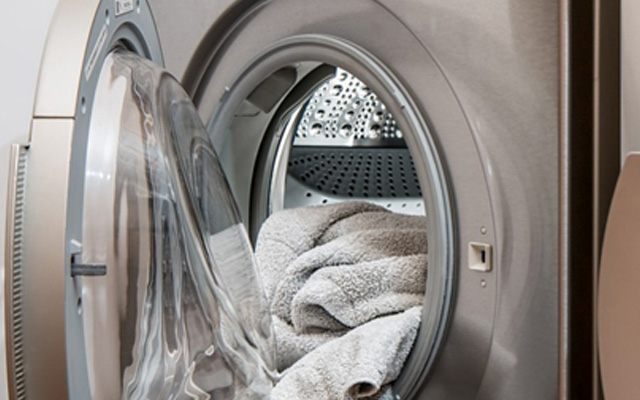Domestically, housewives and maids were using smaller irons for years, and in truth, homemakers’ needs continue to send a strong message to technology. General Electric was among the first to produce an electric iron for household use. In the 1920s, however, when the boys came home from World War I, technology began to change more rapidly. America was quickly becoming a world power, and had multiple inventions and patents at its fingertips. Fulton had invented the steam engine in the 1800s and pairing that with the electric iron, the steam iron was created in the early 1900’s.
Initially, fabrics were wet down, then ironed with hot metal irons. With a steam iron, the hot moisture allowed wrinkles to be pressed out of a garment in one step, also dampening it so that pressed-in creases and perfected finishes without scorching were possible. It wasn’t until the 1950’s that pressing equipment became both steam and electric, so that one or the other could be used. Now, it is computer driven as well.
Within the manufacturing industry, the steam iron — and subsequently steam presses–made ready-to-wear clothing possible. With the changing world of technology, ever-increasing ready-to-wear garments, the advent of dry-cleaning and laundering facilities, presses allowed men and women to have their garments neatly made, purchased, and worn so that they kept their appearance for years.
There are all kinds of presses: Collar, shoulder, shirting, cuff, hat, buck presses in all sizes for coats and larger garments, the Suzy-Q presses for dresses, and more. These presses are either run manually, electronically, or by computer.
The more powerful and multiple the presses, the larger the boiler has to be to run them. Compressors are used, but ultimately, the steam boilers are there to drive the equipment with anywhere from 10-300 horsepower, or with multiple boilers of smaller power, such as three 50 horsepower boilers. They are enormously powerful, and a large manufacturing plant can spend up to $100,000 on its boiler system. In the past, any boiler over 30 horsepower had to have a fulltime person on staff to supervise the machinery, it was that dangerous. Today, the equipment is built with multiple safeguards, so that most boilers can be maintained by the owners, themselves.
The majority of presses and boilers are made in Italy or in Asia. American made items are all but gone. It used to be that American machinery was built out of steel and cast iron and made to last 50-100 years. Hoffman, Ajax, and Sisal were such companies. Now, all that remain of them are parts and service replacement dealers. Old machines are still better than any new items on the market that are only built to last 10-15 years. These are less expensive, easier to maintain, largely computerized and electronic, but they’re quickly outdated with no replaceable parts. Make no mistake: A modern press can cost $7,000 – $40,000, and that doesn’t count installation, parts, service, or building the room to put it in.
It used to be that fabrics were made from all natural fibers, and the presses accommodated them. Everything was about precision and quality. Today, quality is not the primary goal; economy is. If a company can purchase a throw-away press that can do the job cheaper and faster so that more garments can be pressed at a time, there is less overhead; hence, more profit. The shops that have the old manual presses–the steam presses without multiple garment capacity– will ultimately be outshone by companies who press more rapidly, if not quite as well or expertly.
Dennis Trotter of D&R Enterprises, who has been in the business for almost 40 years says, “The primary change in the pressing industry is that fabrics have changed so much. With technology, there are permanent press, wrinkle free finishes. There are many fabrics that don’t need to be dry-cleaned; people can do their clothes at home, throwing them in the dryer or hanging them up to dry. Items don’t even need to be pressed upon being manufactured.”
It will be interesting to see where the future of the pressing industry will go – forward with newer and more highly developed, expendable equipment – or increasingly discontinued as more advanced technology develops fabrics that have no need of presses, at all.












